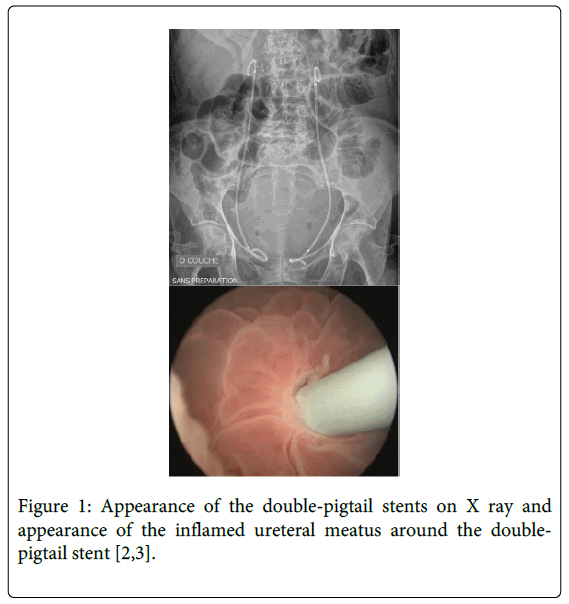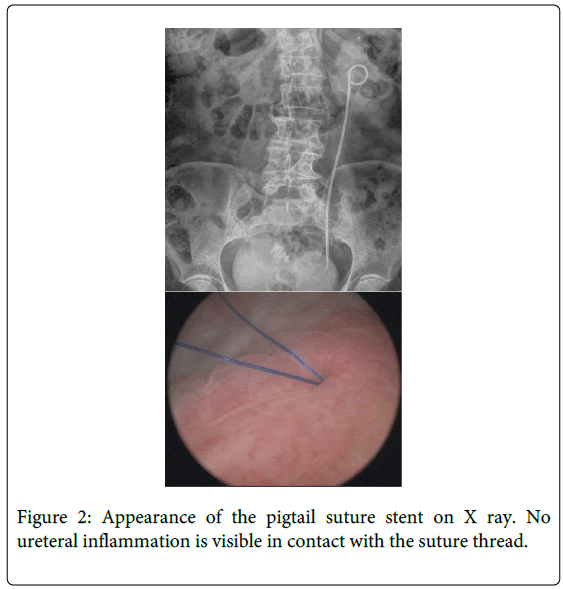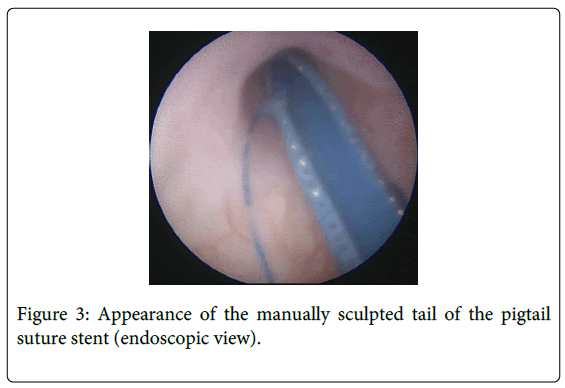Short Communication Open Access
Improving the Quality of Life of Patients with Ureteral Malignant Obstruction
Benoît Vogt1*, Arnaud Desgrippes1, Philippe Laplaige2, Jean-Michel Boulet2, Patrick Seys2 and François-Noël Desfemmes11Department of Urology, Polyclinic of Blois, 1 Rue Robert Debré, 41260 The Chaussée Saint-Victor, France
2Department of Oncology, Polyclinic of Blois, 1 Rue Robert Debré, 41260 The Chaussée Saint-Victor, France
- *Corresponding Author:
- Benoît Vogt
Department of Urology, Polyclinic of Blois, 1 Rue Robert Debré
41260 , The Chaussée Saint-Victor, France
Tel: 33663220844
E-mail: message@benoitvogt.fr
Received date: September 09, 2014; Accepted date: November 02, 2014; Published date: November 10, 2014
Citation: Vogt B, Desgrippes A, Laplaige P, Boulet JM, Seys P et al. (2014) Improving the Quality of Life of Patients with Ureteral Malignant Obstruction. J Palliat Care Med 4:196. doi:10.4172/2165-7386.1000196
Copyright: 2014 Vogt B, et al. This is an open-access article distributed under the terms of the Creative Commons Attribution License, which permits unrestricted use, distribution, and reproduction in any medium, provided the original author and source are credited.
Visit for more related articles at Journal of Palliative Care & Medicine
Short Communication
In a patient with cancer, the ureter may be obstructed by tumor progression. The urologist implants a double-pigtail stent between the kidney and the bladder when an obstruction of the ureter is found.
International scientific medical studies estimate that 80% of patients complain of different symptoms [1]: incontinence, urinary frequency, urgency, dysuria, hematuria, pelvic and lumbar pain. The symptoms are largely due to bladder irritation caused by the stent and by reflux during bladder voiding (Figure 1).
This treatment-induced suffering can cause an additional suffering to the canceroussymptoms. Thus, we developed a new ureteral stent.
In our view, the original stent is essential to bypass the obstacle but its presence is unnecessary below the stenosis when the ureter is healthy. Thus, the part of the stent in the bladder is of no use in such conditions and its presence may provoke unwanted secondary effects.
In our innovative stent, named pigtail suture stent, the lower part of the stent is replaced by a 0.3F suture thread. The ureteral meatus intubated by the thread shows no inflammation (Figure 2).
Subsequently, we have improved tolerance stents [2,3] by creating a profiled tail but industrial manufacturers could further improve the profile of the tail that is currently manually sculpted (Figure 3).
We used these stents in more than 40 patients with cancer (Prostate, bladder, uterus, colon, and breast) or post-radiation stenosis. Stent symptoms are increased in case of prior pelvic irradiation. These diseases often force patients to keep the stent for the rest of their lives. This perspective associated with the stent symptoms, strongly affects the patient's feeling.
We wish to inform the oncology community that this new stent can fortunately improve the patient's quality of life when a malignant tumor causes ureter obstruction.
References
- Joshi HB, Stainthorpe A, MacDonagh RP, Keeley FX Jr, Timoney AG, et al. (2003) Indwelling ureteral stents: evaluation of symptoms, quality of life and utility. J Urol 169: 1065-1069.
- Vogt B, Desgrippes A, Desfemmes FN (2014) [Pigtail suture stent: decisive progress towards double-pigtail stent tolerance and unexpected properties of the suture in the ureter]. ProgUrol 24: 441-450.
- Vogt B, Desgrippes A, Desfemmes FN (2014) Changing the double-pigtail stent by a new suture stent to improve patient's quality of life: a prospective study. World J Urol.
Relevant Topics
- Caregiver Support Programs
- End of Life Care
- End-of-Life Communication
- Ethics in Palliative
- Euthanasia
- Family Caregiver
- Geriatric Care
- Holistic Care
- Home Care
- Hospice Care
- Hospice Palliative Care
- Old Age Care
- Palliative Care
- Palliative Care and Euthanasia
- Palliative Care Drugs
- Palliative Care in Oncology
- Palliative Care Medications
- Palliative Care Nursing
- Palliative Medicare
- Palliative Neurology
- Palliative Oncology
- Palliative Psychology
- Palliative Sedation
- Palliative Surgery
- Palliative Treatment
- Pediatric Palliative Care
- Volunteer Palliative Care
Recommended Journals
- Journal of Cardiac and Pulmonary Rehabilitation
- Journal of Community & Public Health Nursing
- Journal of Community & Public Health Nursing
- Journal of Health Care and Prevention
- Journal of Health Care and Prevention
- Journal of Paediatric Medicine & Surgery
- Journal of Paediatric Medicine & Surgery
- Journal of Pain & Relief
- Palliative Care & Medicine
- Journal of Pain & Relief
- Journal of Pediatric Neurological Disorders
- Neonatal and Pediatric Medicine
- Neonatal and Pediatric Medicine
- Neuroscience and Psychiatry: Open Access
- OMICS Journal of Radiology
- The Psychiatrist: Clinical and Therapeutic Journal
Article Tools
Article Usage
- Total views: 13912
- [From(publication date):
November-2014 - Apr 02, 2025] - Breakdown by view type
- HTML page views : 9438
- PDF downloads : 4474



